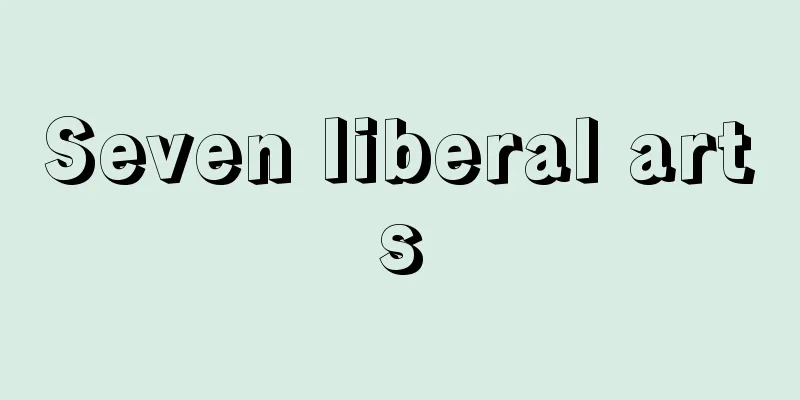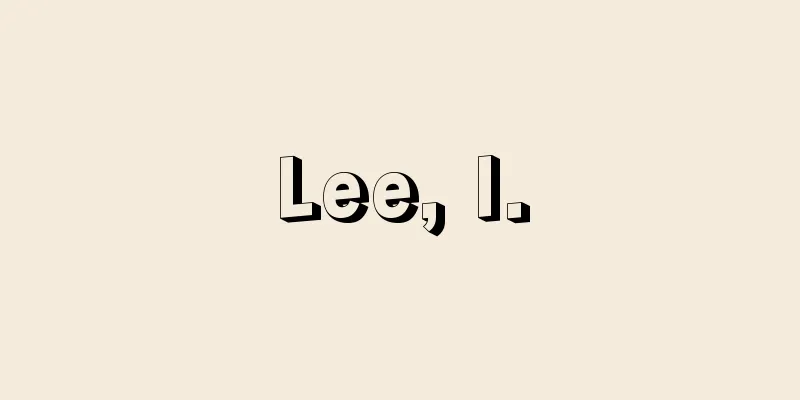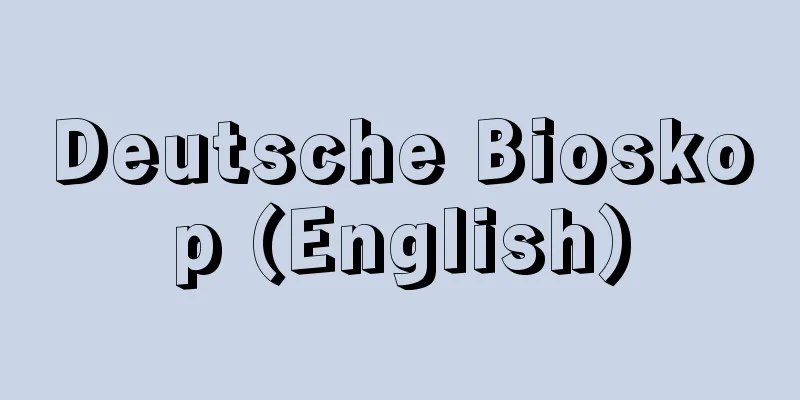Seven liberal arts

|
Basic subjects for secondary or higher education in medieval Europe. Also called the seven liberal arts. They consist of the three subjects of grammar, rhetoric, and dialectics (trivium) and the four subjects of arithmetic, geometry, astronomy, and music (quadrivium). This type of subject can be traced back to ancient Greece and Rome, and was respected as a comprehensive education (paideia) and liberal arts (liberal arts) suitable for free people. Later, around the 5th century, Cassiodorus (487?-583?) and others compiled the traditional Greek and Roman learning into seven subjects and officially established them in order to organize the educational content based on Christian ideals. The three subjects are elementary and relate to speech, while the four subjects are more advanced and relate to things. The content is different from the scope of the names today, and there is also a difference in time. For example, grammar included commentary on Latin literature, rhetoric included the creation of church documents and laws and history, geometry included elementary geography, astronomy included astrology, and music included mathematical research. Upon completing these subjects, students were allowed to study theology, which was the highest level of study in the Middle Ages. From the 13th century onwards, in medieval universities, it became a core subject in the Faculty of Liberal Arts, which was a progression course to the specialized faculties of theology, law, and medicine. The spirit of the Seven Liberal Subjects continued to foster an educational philosophy that one must be an excellent human being before being a professional or expert, and has had a major influence on school and university education. The general education curriculum adopted by Japan's new universities also follows this historical trend in the West. [Katsumi Shiraishi] "The Origin of the University" by H. Rashdall, translated by Soei Yokoo (1968, Toyokan Publishing) [Reference] |Source: Shogakukan Encyclopedia Nipponica About Encyclopedia Nipponica Information | Legend |
|
ヨーロッパ中世における、中等教育ないし高等教育程度の基礎的教科。七自由科ともいう。文法、修辞学、弁証法の三学trivium、および算術、幾何、天文学、音楽の四科quadriviumからなる。この種の科目は古くギリシア・ローマ時代にまでさかのぼることができ、自由人にふさわしい全面的教養(パイデイア)、自由学芸(リベラル・アーツ)として尊重されていた。その後、5世紀ごろカッシオドルス(487?―583?)らがキリスト教の理念に基づき教育内容を整えるために、従来のギリシア・ローマの学問を七つの教科として集大成し公式に定められた。三学は初歩的で言論に関し、四科はより高度で事物に関する教科である。その内容は今日の名称が意味する範囲とは異なり、また時代差もある。たとえば、文法はラテン文学の注釈、修辞学は教会の文書・法令の作成や歴史、幾何は初歩の地理学、天文学は占星術、音楽は数理的研究などを含んでいた。これらを修めると中世の最高位にあった神学を学ぶことが許された。13世紀以降の中世大学では神学、法学、医学の各専門学部への進学課程であった学芸学部の中核的な教科となった。自由七科の精神はその後も、職業人や専門家である前に優れた人間でなければならないという教育理念をはぐくみ、学校教育や大学教育に大きな影響を与えてきた。わが国の新制大学に取り入れられた一般教育課程もこのような欧米の歴史の流れをくむ。 [白石克己] 『H・ラシュドール著、横尾壮英訳『大学の起源』(1968・東洋館出版社)』 [参照項目] |出典 小学館 日本大百科全書(ニッポニカ)日本大百科全書(ニッポニカ)について 情報 | 凡例 |
>>: Free thinker - jiyushisoka (English spelling)
Recommend
Eeden, Frederik Willem van
Born: April 3, 1860 in Haarlem [Died] June 16, 193...
Macip, V. (English spelling) MacipV
... The Middle Ages in Spain continued until the ...
Stress drop - stress drop
… M 0 is called the seismic moment, and is the mo...
Cassiopeia - Cassiopeia
A constellation that rises high in the northern s...
Nuclear fusion reactor
A system that extracts energy generated by nuclea...
Bangweulu [Lake] - Bangweulu
Lake Zambia, southern Africa. It is located in the...
FAB - Fab
A factory that manufactures chips. It is an abbrev...
Middle-aged man - Middle-aged man
〘noun〙① A person whose talents and abilities are a...
Agricultural Association - Noukai
One of the major agricultural organizations befor...
Ring-necked sword
…In recent years, bronze swords have been excavat...
Evaporation - johatsu (English spelling) vaporization
Evaporation occurs when vaporization occurs from ...
space travel
...flight in space, i.e. outside the Earth's ...
Ring Nebula
A beautiful planetary nebula in the constellation...
Herrera, J. de - Erera
…The monastery was dedicated to Saint Laurentius ...
Battle of Ishibashiyama
The first battle after Minamoto no Yoritomo raised...


![Orquesta Típica (English spelling) [Spain]](/upload/images/67cb242310a16.webp)

![Chinen [Village] - Chinen](/upload/images/67cc2ef865547.webp)




